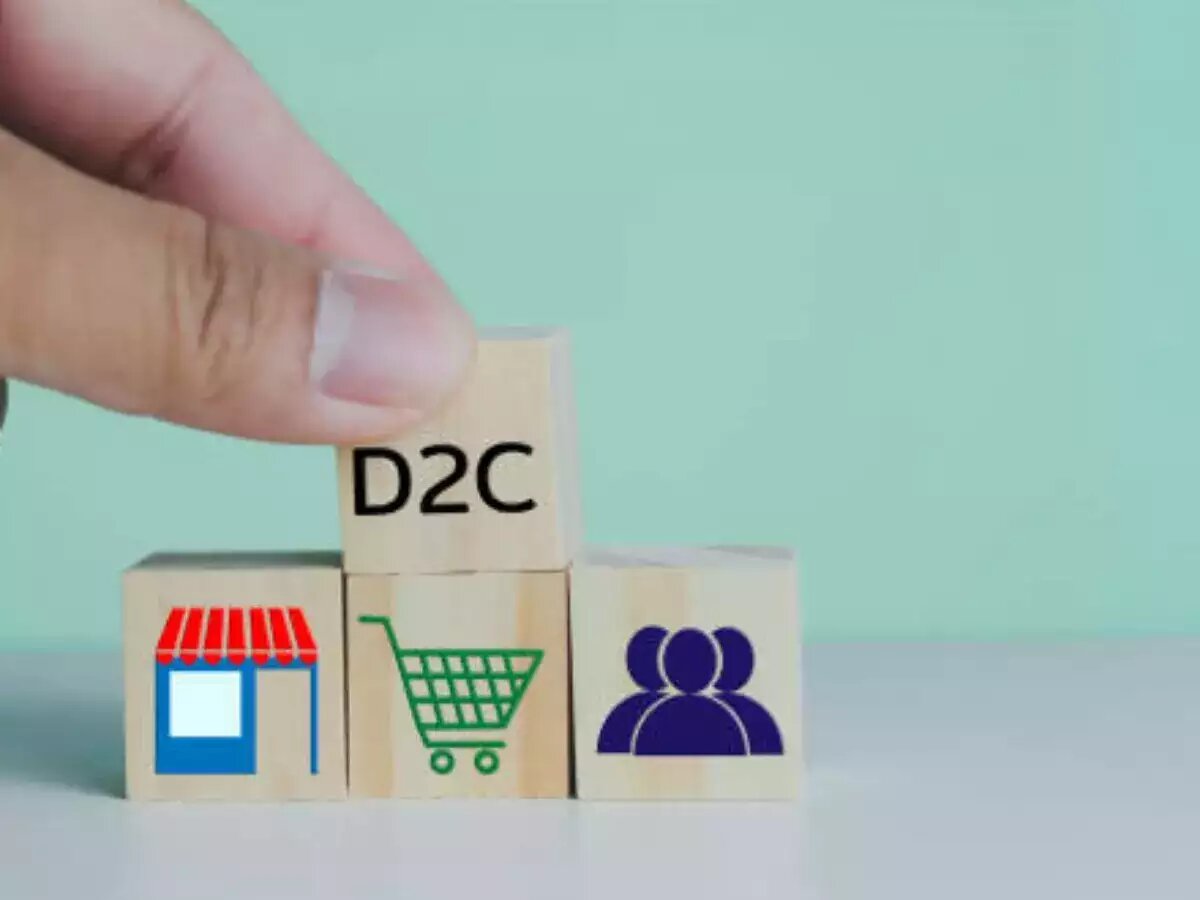With omnichannel marketing, personalisation at scale, offline expansion and global thinking becoming the buzzwords in the D2C space all through 2022, brands are now geared up to expand their horizons to AR, VR and other unexplored horizons in the coming year.
A report by Shiprocket revealed, in 2022, more than 800 brands took their business forward via the D2C route.
Well-established conglomerates were challenged head-on by new age brands as the former was attacked with multiple health concerning allegations, whereas the latter offered vegan, cruelty-free and gluten-free products.
The report also stated that on one hand where brands like Revlon and Lakme took decades to hit the INR 100 crore revenue mark, new age D2C brands like Sugar and Mamaearth made that happen in about half the time in the market.
Moving ahead, ETBrandEquity asked D2C brands to unveil the upcoming trends they foresee in 2023 and how they plan to gird their loins.
“Simultaneous expansion and contraction in short term strategies,” Shashank Mehta, co-founder, Whole Truth Foods
D2C brands often service consumer need-states that are niche, and this requires consumer education, brand awareness building and consumer acquisition, whose payback period tends to be longer than a year.
In this context, the funding winter in the market looms larger over the D2C space. Inability to plan P&L over a longer horizon will cause reorientation of ways of working in brands, which will throw up interesting challenges for each individual firm and hence opportunities at a macro level.
The industry will simultaneously see expansion and contraction as short term strategies. Some brands will expand their reach into other e-commerce marketplaces and/or select physical retail in order to better leverage existing brand equity and awareness in the hunt for cheaper consumer acquisitions. At the same time, some more brands will pull back from investing in partnerships with online and offline retailers in order to conserve cash. What plays out will be a combination of the brand’s cash runway, current life stage and growth hypothesis.
The Whole Truth will invest aggressively behind building the brand via both our much loved content on food, fitness and nutrition and via awareness building advertising to improve the salience of the brand with shoppers.
The brand will also continue to partner with online and physical retailers to grow the brand profitably for both parties. In a nutshell, our strategy is to stay the course, while executing better.
“Personalisation will play a key role,” Naveen Murali, head of marketing, Pepperfry
In India, the D2C market continues to grow bigger in reach and size. Trends such as omnichannel expansion, growth of niche categories, wider expanse of reach and servicing is expected to gain significant momentum in the coming year.
Personalisation will play a key role for D2C ecommerce brands which will be enabled by martech platforms and Pepperfry will consciously work to make it happen for its consumers.
Fifty-sixty per cent of consumers become repeat buyers after a great personalised shopping experience. Technology should also reshape commerce through more impactful use cases of AR, VR and Metaverse.
Pepperfry will continue to make further strides on omnichannel expansion, inclusion of niche categories and brands to widen its reach. It aims to build transformative solutions for its consumers through sustained focus in AR and VR for a fulfilling experience.
“Social commerce will see immense rise,” Harsh Parekh, general manager-marketing, Wow Skin Science
It’s all about being present where the consumer is, and pushing them deeper into the marketing funnel until conversion happens and the customer is acquired. In D2C space primarily, along with building awareness, it’s extremely crucial for brands to acquire new customers and generate revenue.
Thus, channels where direct impact can be measured, such as performance marketing and affiliate marketing, are always going top the list. Channels such as influencer marketing which allows building top of the mind recall and pushing potential buyers in consideration phase and even driving conversions, follows immediately after.
Tying content marketing via influencers and boom in short format video consumption, social commerce will see immense rise in 2023.
The brand can see platforms like YouTube leveraging their short format channel – YouTube Shorts for social commerce, and help brands reach out to newer audiences and help with immediate conversion on their platform.
This again ties back to the first statement where ‘being present where the consumer is and pushing them deeper into the marketing funnel and until conversion and acquisition.
“D2C space will continue its strong growth,” Abhimanyu Mishra, head of marketing, Bewakoof.com
The optimism with D2C brands is running high and the D2C space will continue its strong growth in 2023 with an expected CAGR of 30 to 40 per cent.
The brand is expecting to see a similar trend in the D2C apparel space. In the last one year, youth fashion has moved towards streetwear a lot where we’re seeing oversized fits across apparel categories dominating the trend.
Bewakoof sees this trend only getting stronger in 2023 and Bewakoof is investing in appropriate product lines to address this customer demand.
“Customers are willing to share information with brands,” Jennifer Pandya, vice president-marketing, Caratlane
At CaratLane the key trend that the brand sees playing out in the coming year is personalisation. Customers are willing to share information with brands as long as they see that there is value in sharing it – if their life becomes simple and the brand is making that happen.
The brand is looking to personalise not only communication but all parts of the user journey. The customer wants to see curated designs relevant to her buying occasion at the discovery stage and wants to know the possibility of customisation within the timeline they have.
Delivery timelines and the visibility of stores around the consumer’s need to be displayed as per their pincode and for the designs that they have interest in. The consumer is also looking at customisation of packaging depending on the occasion.
So it becomes important to collect all the relevant customer information and use it at the right time to improve their overall experience with the brand.
“Larger value unlocked by solid content,” Kaushik Mukherjee, co-founder and chief operating officer, Sugar
After witnessing massive growth in the last few years, we strongly believe that 2023 will see notable shifts in how consumers shop and make purchases in the D2C space. This will largely be driven by factors such as higher mobile usage, personalised experiences, omni-channel marketing and more.
However, the brand has found a larger value unlocked by investing in a solid content plus earned media strategy that can organically expand top-of-the-funnel metrics via high-quality traffic and assets that keep on giving.
Additionally, better customer service, limited-edition merchandise, gifts on purchase and better inventory availability at source – D2C looks super promising this year.
As an industry, we expect D2C businesses to gain momentum by expanding niche categories, new market entrants, and investors’ positive investments. Brands will continue to invest in technology and innovation that will help them in making an impact.
“Indian customer buying patterns are now driven by convenience and perceived value,” Shan Kadavil, co-founder, FreshToHome
India has the third largest online shopper base globally, and Indian online shoppers are expected to outnumber US online shoppers soon.
These projections demonstrate that Indian customer buying patterns have changed driven by convenience and perceived value.
This offers opportunities to brands to establish trust with their target customers. Providing value to customers and narrating an authentic brand story are the cornerstones of communication from e-commerce platforms.
We should leverage appropriate media channels to drive customer-led conversations. Hyper-personalisation at mass scale will be a game-changing trend going ahead.
This year the brand looks forward to building communication that reinforces the journey of our brand. It will also focus on product innovation, paying tribute to the regional cuisines across the country.
“Omnichannel marketing strategy is the way to go,” Sukhleen Aneja, CEO, Good Brands Co, The Good Glamm Group
The evolving D2C space is going to continue to disrupt the traditional market with consumer-friendly services and by being present where the consumer is.
In 2022, there was a greater emphasis on strong business models and profitable unit economics, and, in general, many D2C brands that recently emerged during the pandemic strengthened their foundations.
Therefore, for D2C brands 2023 is going to see further amplification of online channels and expansion into offline points of sales, as an omnichannel marketing strategy is a way to go. A lot of the focus will be on customer loyalty and retention.
Customer-focused branding is going to lead the game, as social media will continue to be a vital tool. Perhaps with more funding rounds, brands would like to invest in differentiated brand narrative, product innovation, technology, data science, and supply chain specialisations that will take precedence.
Products with a high moat and IPs with strong monetisation potentials will scale and generate revenue across channels.
It is estimated that D2C brands in India are growing at a CAGR of 40 per cent and are expected to rise from USD 12 billion in 2022 to USD 60 billion by 2027.
Delivery is more of an efficiency game for us: Neha, CMO, Pizza Hut

